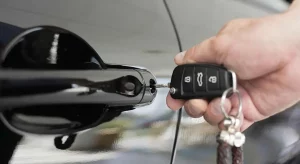The automotive industry, with its reliance on precision and durability, considers bearing maintenance a pivotal aspect of vehicle care. Bearings are the unsung heroes of any vehicle, ensuring that everything from the wheels to the engine operates smoothly. A bearing’s failure can lead to a cascade of mechanical problems, compromising vehicle performance and safety. Therefore, a structured maintenance regime is indispensable.
Regular Cleaning and Inspection
The maintenance journey for automotive bearings starts with habitual cleaning and inspection. For vehicle bearings, this means meticulously removing any accumulated debris, dirt, and grime that can significantly shorten a bearing’s lifespan. During inspection, attention is paid to any signs of wear, corrosion, or damage. These inspections become even more critical for bearings in vehicles operating in harsh environments, like construction or agricultural vehicles that often contend with dirt, dust, and debris.
Lubrication Specifics
Following cleaning, lubrication stands out as a vital step. The right lubricant creates a thin film that separates the bearing’s moving parts, reducing friction and the wear-and-tear that comes with it. Automotive bearings require lubricants that can withstand high temperatures and pressures, especially in high-performance or heavy-duty vehicles.
Adherence to the manufacturer’s specifications is non-negotiable, as is the timely application based on driving conditions, be it the stop-and-go traffic of urban commutes or the prolonged runs of long-haul trucks.
Suggestion: When Do 2025 Cars Come Out? – Upcoming Cars Going On Sale
Installation and Handling
Proper installation is paramount to ensure that bearings function as intended. Automotive technicians must be proficient in using the correct tools and techniques, as even slight misalignment or imbalance can lead to premature bearing failure. The use of specialized fitting tools is recommended to avoid damaging the bearing races or balls. Bearings in automotive applications, such as those in transmission systems or wheel hubs, require precise handling to maintain their integrity.
Monitoring and Environment
Active monitoring of bearing temperature and noise can preempt failures. In the automotive context, an increase in bearing temperature might indicate heavy friction, insufficient lubrication, or overloading, while unusual noise could suggest debris contamination or wear. Environmental conditions where vehicles are operated and stored can’t be ignored. A vehicle stationed in a coastal area, for example, is more susceptible to bearing corrosion due to salty, humid air.
Also Check: Land Rover Vs Range Rover– What Is The Difference?
Scheduled Maintenance and Training
Scheduled maintenance is a cornerstone of automotive care. This involves regular checks and functional tests under various operating conditions. Bearings that exhibit fatigue or wear should be replaced immediately to prevent more serious issues.
Equally important is the training of automotive personnel. Mechanics and technicians should have a deep understanding of different bearing types, potential failure modes, and maintenance best practices. This is especially relevant with the advent of electric vehicles, where bearing characteristics may differ from those in traditional combustion engines.
Conclusion
In summary, bearing maintenance is an intricate dance of diligent care, regular monitoring, and a proactive stance on issue resolution. In the automotive industry, where reliability and safety are paramount, these practices take on heightened importance. As automotive technology evolves, so too must the approaches to bearing maintenance, ensuring that personnel are trained in the latest methods and are aware of the nuances introduced by new vehicle technologies.
By committing to thorough bearing maintenance, the automotive industry can assure not just the longevity and efficiency of bearings but also the safety and reliability of the vehicles we depend on every day.






